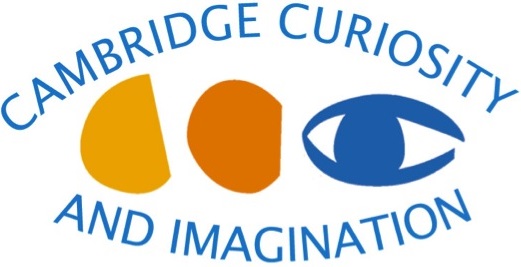The Architecture Centre Network (ACN) was an independent organisation representing centres of architecture and the built environment in the UK. ACN commissioned Atoll to prepare a series of retrospective case studies on the work on the network centres. Below is featured the second of six articles prepared in August 2006:



2. Talk About Tomorrow
As a part of ‘Building Schools for the Future’, 1 the initiative ‘21st Century Schools’ 2 explored the future visioning of schools. This was something that Creative Partnerships in Tendring 3 decided to build upon, following its establishment in the East of England – and where they steered the early focus of architecture and creative spaces, towards the process of more engaged learning itself. Using such approaches, Creative Partnerships believes it can continue to inspire young people, the teaching profession, and the arts community to work together in more creative ways, ’to raise aspirations, nurture imagination and develop thinking skills’. Its aim is to grow creative citizens who will have a voice and a place, and who will develop the life skills necessary to be valuable contributors to their communities. In this process, education is seen as a young persons ‘gateway to their future’.
Developing this concept further, Creative Partnerships funded the 4-month project Talk about Tomorrow – which involving primary schools in Tendring. It was facilitated from November 2005 by architecture centre SHAPE East, 4 and was designed by the network arts organisation called ‘Cambridge, Curiosity and Imagination’ 5 (CCI). The combination of SHAPE, with its stated ambition to ‘help people make better places’, and CCI with its commitment to ‘develop exciting learning opportunities for young people’ was the dream ticket to explore new methods of creative collaboration. In their previous experience, CCI had found that artists and architects were both comfortable in working collaboratively. As part of Talk about Tomorrow, 4-day residencies were created to pair artists and architects with teachers, and to act as Creative Practitioners – to respond to the project title, and to create a personal response to the schools.The process was preceded by detailed ‘induction’ and followed up afterwards with ‘observation’, ‘thinking’ and feedback ‘reflection’ days for all creative facilitators and teachers.
Central to CCI’s approach is something called the ‘Reggio Emilia Approach’ 6. This is a belief that the child is rich, strong and powerful, and that the ‘rhythm and pace’ of a child should always be given overriding importance. As such, all Creative Practitioners took up an early stance during the projects, working alongside the children, rather than acting as ‘experts’ – seeing themselves as co-learners with the children, to discover along with them. As one Creative Practitioner put it: “we encouraged children to explore their own ideas and we take them on a journey that allows them to do so”. To best facilitate this process, Creative Practitioners used ‘learning spaces’ that they felt could be ‘neutralised’ in order that the children weren’t ‘squeezed out’. In these, displays were covered over by white sheets or paper; furniture was moved, so that floors could be fully accessible; and rooms were darkened so that specific sources of light could be introduced – becoming as one Creative Practitioner described, “a space that was open to transformation”.
Given the constraints of many aspects of the National Curriculum, for many of the teachers involved, the experience of Talk about Tomorrow was initially uncomfortable. However, once they had been able to observe at first hand the impact on their children of working in a more process-led, child-centred way, they began to appreciate the powerful learning behaviours that such creative approaches could enable. One Head Teacher, who embraced the project in her school with enormous enthusiasm, felt the Creative Practitioners offered powerful role models for her staff. “Creative Practitioners are facilitators not Educators…we need to move away from having a teacher up front delivering learning”. This model represents how SHAPE would like to use creative consultation, in the future – where such process-led learning can begin to break down barriers whilst starting serious debates.
Other Details:
The Curiosity & Imagination network is made up of people who are developing exciting learning opportunities for children and young people in all kinds of settings across the UK. Curiosity & Imagination promotes an approach to children’s learning which: harnesses the power of playful, hands-on experience as a tool for learning; empowers parents and carers to support their children’s learning; encourages community ownership of the provision, giving children a central role in decision-making; and draws in expertise from local partners across a range of sectors.
In educational terms, the northern Italian town of Reggio Emilia has become renowned worldwide for its forward thinking and exemplary approach to early childhood education – founding the Reggio Emilia Approach, and seeing itself as the ‘International Center for the Defence and Promotion of the Rights and Potential of All Children’.
A typical project from Talk about Tomorrow, involved architect Adam Peavoy and artist Christian Lorimer spending time together in a school in Harwich. Whilst carrying out the residency. There, they took photographs of the surrounding environment then worked with the pupils to explore them to get them to think about it. Results were printed large onto banners and put them in the room they were working in. Pupils were then asked to make responses via clay – to see how these images influenced their thoughts.
Weblinks:
1. www.bsf.gov.uk
2. www.buildingfutures.org.uk
3. www.creative-partnerships.com/Tendring
4. www.shape-cambridge.org.uk
5. www.centresforcuriosity.org.uk
6. http://zerosei.comune.re.it/inter/index.htm
Categories: Writing